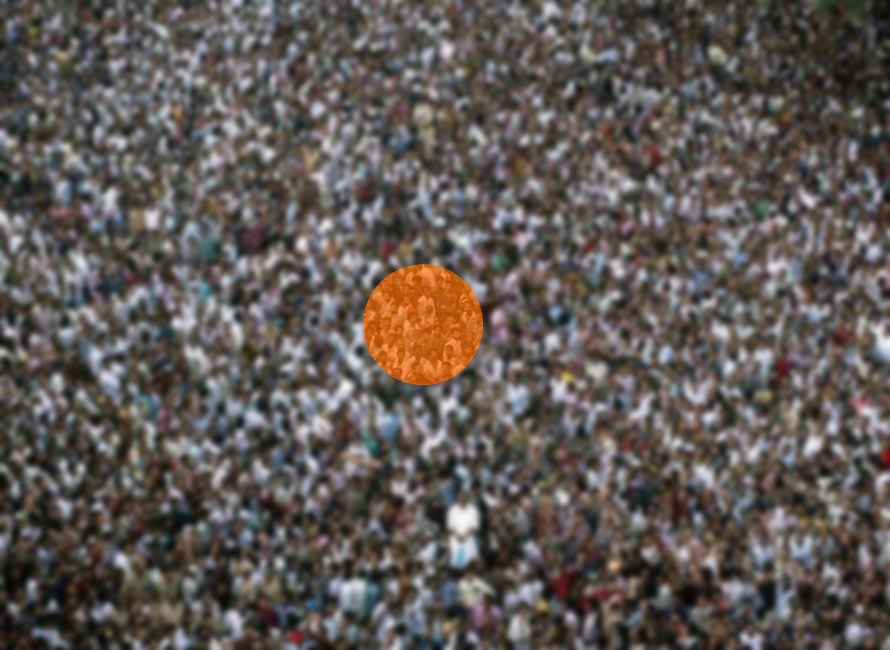Religious demographics is a taboo subject in India. Any talk of falling Hindu population is dismissed out of the hand by ‘experts’ as a right-wing conspiracy. These same experts rave and rant that it will take at least a century for the Muslim population to equal that of Hindus and that any talk of de-Hinduization of India by demography is an abject lie. Be that as it may, one can highlight the example of Kashmiri Pandits, who once reduced to an inconsequential demographic number in the valley, were hounded out, thereby completing the de-Hinduization of Kashmir valley. But for now, let us look at data to decide whether India is facing a demographic debacle.
1. Religious demographics
Hindus made up 85% of India’s population in 1951. Their strength has declined to nearly 80% in 2011. The share of Muslims in India’s population has, in the same period increased from nearly 10% to over 14% in 2011. In absolute numbers, Hindus have trebled from 303 millions in 1951 to 966 millions in 2011. Muslims have grown from 35 million in 1951 to 172 millions in 2011 (~ 5 times). Share of all other Indic religions- Buddhism, Sikhism, Jainism have declined in the same period. Interestingly, Christianity has maintained its 2.3% share between 1951 to 2011.
2. Population Growth rate
India’s overall population grew at 17.7% between 2001-2011. At the same time, Hindu population grew at 16.8%, while the Muslim population grew at 24.6%. Christian population grew at 15.5% in the same period. Interestingly, other than Islam, no other religious community posted a growth more than average rate of growth for the country as a whole. In annual terms, Hindus are growing at 1.55%, while Muslims are growing at 2.2%. Undoubtedly, there has been a fall in the growth rate of both communities. Hindus grew at 1.8% annually between 1991-2001, while Muslims grew at 2.6% in the same period, but the decline isn’t enough to reverse the falling Hindu population in the country.
3. Total fertility rates
Total fertility rate measures number of children per woman. As per available data, India’s overall TFR is at 2.56 children per woman. The TFR for Muslim women is estimated at 3.2, while the number for Hindu women is 2.5. In 2001, Muslim TFR was estimated to be 4.1 children per woman, implying that Muslim TFRs are falling as well. However, it is estimated that by 2050, Hindu TFR would have dropped to 1.9, below the natural replacement rate of 2.1, implying that Hindus could be staring at a demographic stagnation and decline in the future. At the same time, Muslim TFR is expected to reduce to a self-sustainable level of 2.1. Clearly, TFR paints the picture for the years ahead.
4. Illegal immigration
Illegal immigration is changing the demography of the country on the ground level. As many as 2 crore illegal Bangladeshi immigrants are currently residing in India. On top of that, India is allowing Rohingya immigrants to settle in the country. With the lack of political will, future generations of illegal immigrants would become lawful Indian citizen, thereby putting further strains on the existing demographics of the country. A SwarajyaMag article captures how the Hindu majority village of Mayurgram became the Muslim majority village of Morgram in a span of 25 years.
5. Global trends
Research indicates that the share of all major world religions would fall between 2010-2060, except Christianity and Islam. Christians are expected to make up 32% of the world population by 2060 (up from 31% presently). Share of Muslims would grow from 24% presently to 31% in 2060. In the same period, share of Hindus would decline from 15.1% to 14.5%. Between 2010 to 2015, Hindus had 109 briths, against 42 deaths, implying a natural increase of 67. That is to say, In 2015, Hindus made up 15.1% of the world population, accounting for 16% of all births and 14.5% of all deaths, giving them a demographic advantage. By 2060, it is estimated that Hindus would make up 14.5% of the world’s population, accounting for 11.8% of all births and 15% of all deaths.
Clearly, the future does not seem too rosy for Hindu population.
Demographic changes appear slowly over years and decades, but once these changes happen, they are irreversible. There is still time for the government to open its eyes and act before it becomes too late.
